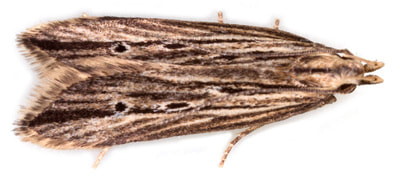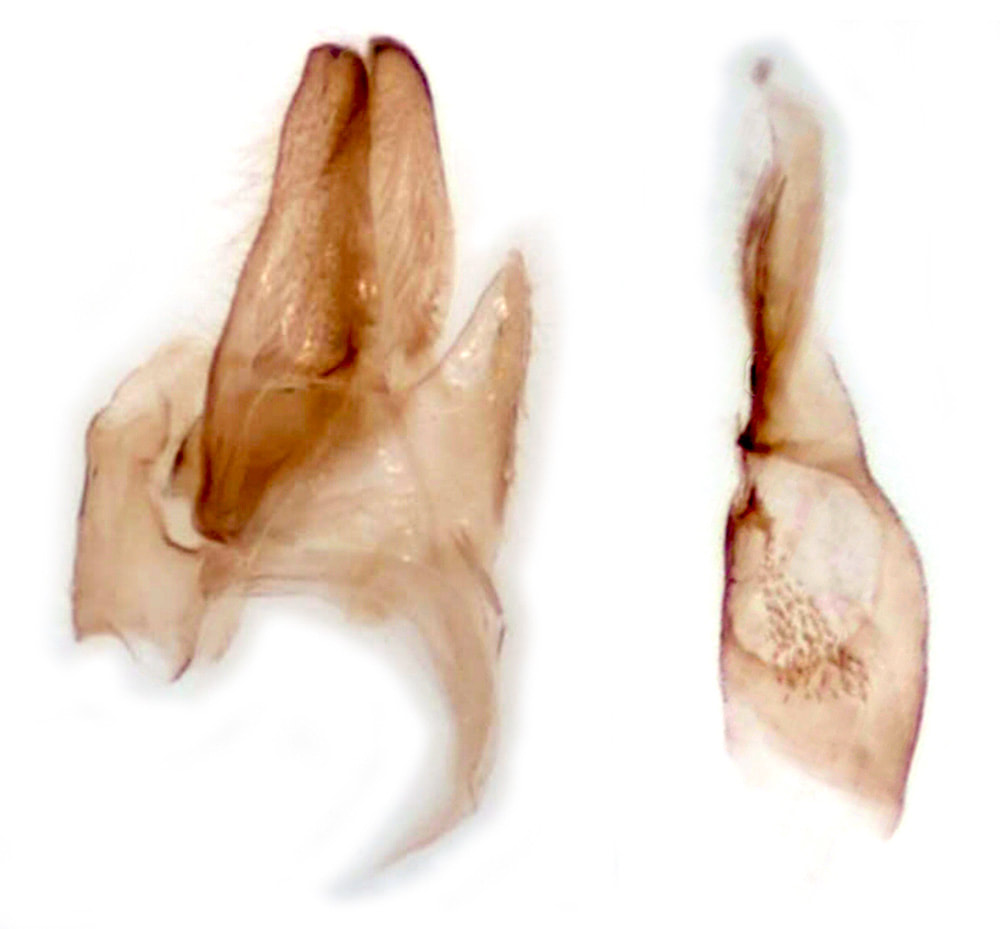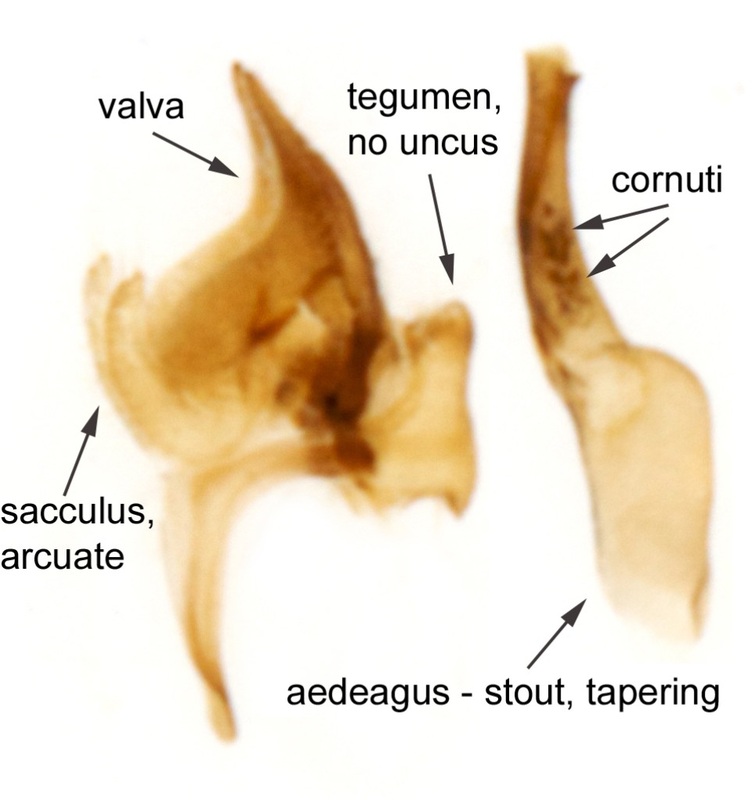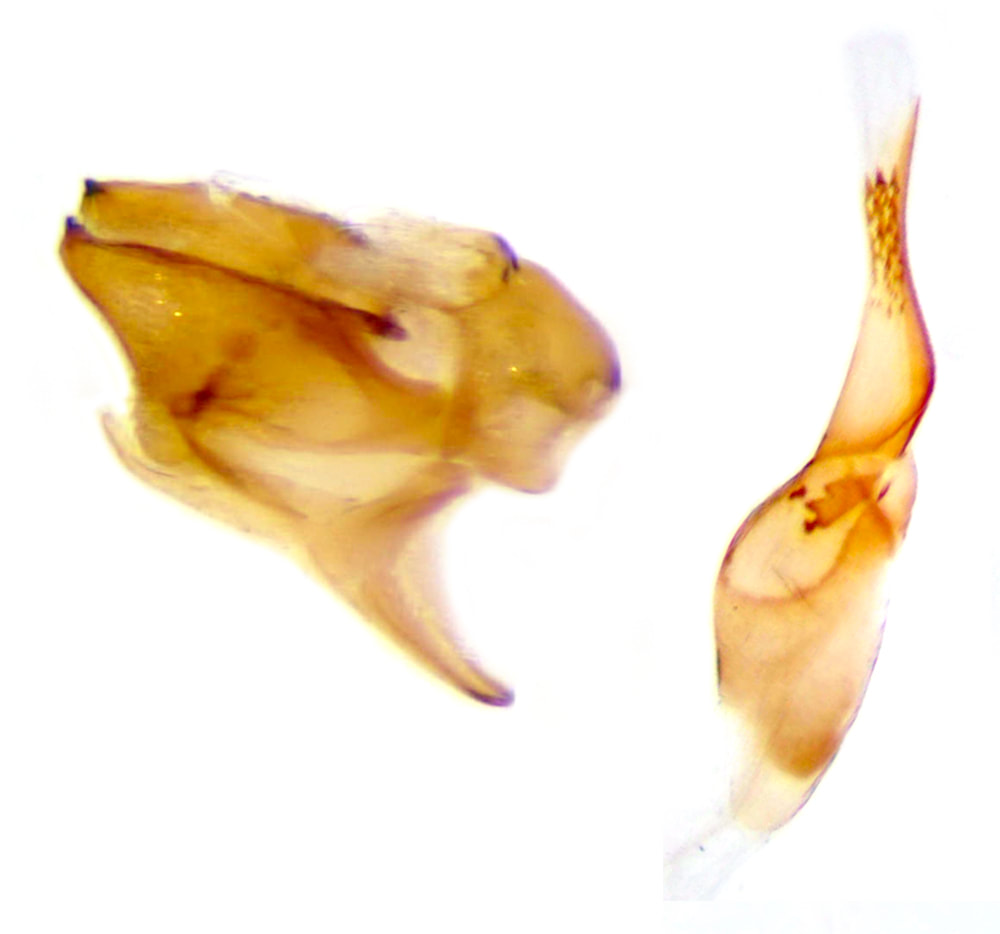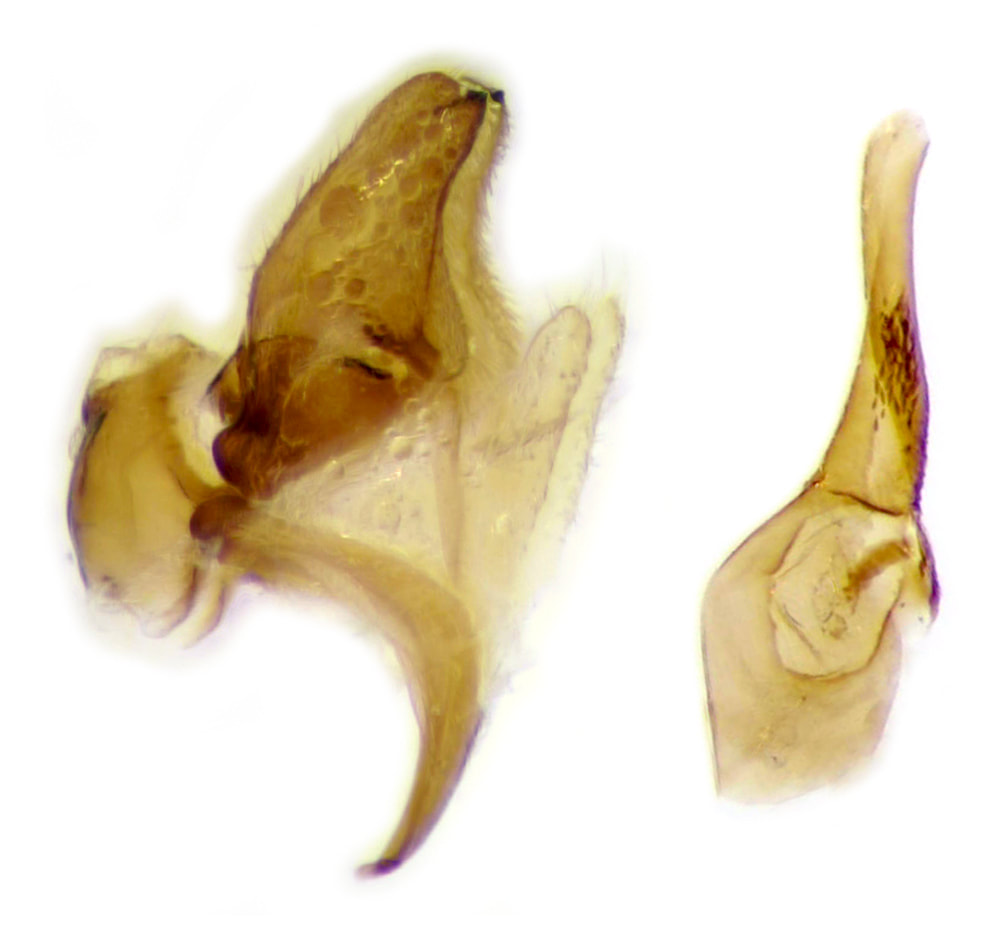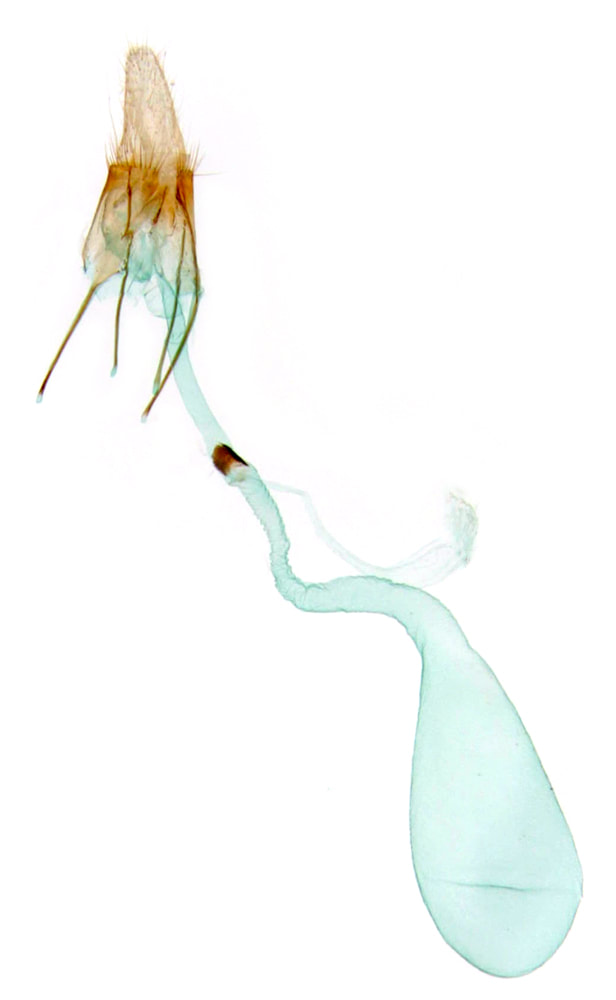Monochroa |
Generic features: Labial palp with S3 as long as or slightly shorter than S2, S2 thickened with appressed scales; Ocelli present;
Forewing elongate, apex subacute, fully veined; V7 stalked with V8; Hindwing elongate trapezoidal (except M.pallustrella is broader), tornus bluntly angled at 100-110deg, termen slightly sinuate, apex strongly and abruptly produced; V6 & V7 remote at origin; cilia up to 3x width of wing
Male genitalia: uncus reduced, gnathos absent, aedeagus bulbed, flagon-shaped, with cornuti; Female genitalia: with signum.
Forewing elongate, apex subacute, fully veined; V7 stalked with V8; Hindwing elongate trapezoidal (except M.pallustrella is broader), tornus bluntly angled at 100-110deg, termen slightly sinuate, apex strongly and abruptly produced; V6 & V7 remote at origin; cilia up to 3x width of wing
Male genitalia: uncus reduced, gnathos absent, aedeagus bulbed, flagon-shaped, with cornuti; Female genitalia: with signum.
Identification of species: Below is a key based on that in MBGBI4.2. Only M.palustrellus and M.cytisella are readily identifiable on external features. The rest of the key may provide clues but genital dissection is required for confident identification. This is partly because there are several species from other genera that can look very similar and partly because many of the key features are not easy to determine with confidence.
Key to species of Monochroa |
|||
Forewing with black streaks |
M.palustrellus |
||
Forewing without stigmata |
Head whitish |
M.cytisella |
|
Head dark |
Forewing glossy dark purple-fuscous |
M.tenebrella |
|
Forewing dark fuscous irrorate grey |
M.conspersella |
||
Forewing with 1 stigma (2nd discal) |
Forewing whitish-ochreous |
M.suffusella |
|
ws: 8-9mm; fw <4.5mm |
M.moyses |
||
S1-4 of abdominal dorsum ochreous-yellow |
M.lutulentella |
||
apex of antenna with irregular white rings |
M.hornigi |
||
not as above |
M.lucidella |
||
Forewing with 2 or 3 stigmata |
S2&3 of abdominal dorsum ochreous-yellow |
M.elongella |
|
forewing costal ⅖ pale ochreous, dorsal ⅗ fuscous |
M.divisella |
||
head and labial palps whitish |
ws: 13-15mm |
M.niphognatha |
|
apex of antenna with irregular white rings |
labial palp S3 whitish with fuscous apex |
M.arundinatella |
|
labial palp S3 fuscous with whitish median band |
M.hornigi |
||
apex of antenna with regular or absent white rings |
M.tetragonella/ M.conspersella |
Male genitalia
All Monochroa have a vestigeal uncus, absent gnathos and a bulbed, flagon-shaped aedeagus with cornuti. The species differ mainly in the shapes of the valvae and sacculi and in the extent of sclerotisation at the apex of the valvae. Generally, the valva consists of a strong dorsal (costal) portion and a weaker ventral lobe around which the sacculus arcs to a greater or lesser extent.
All Monochroa have a vestigeal uncus, absent gnathos and a bulbed, flagon-shaped aedeagus with cornuti. The species differ mainly in the shapes of the valvae and sacculi and in the extent of sclerotisation at the apex of the valvae. Generally, the valva consists of a strong dorsal (costal) portion and a weaker ventral lobe around which the sacculus arcs to a greater or lesser extent.
Female genitalia
The species differ mainly in the form of the signum and in shape and position of sclerotisation and spiculation of the ductus bursae.
Further treatment awaits material
The species differ mainly in the form of the signum and in shape and position of sclerotisation and spiculation of the ductus bursae.
Further treatment awaits material
